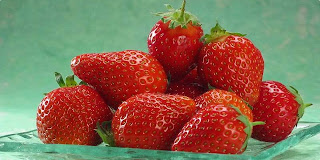Description and Origin
Onions are among the oldest vegetable crops, and from time immemorial have been used for human consumption. Its smell is aromatic, and the taste of a strong, more or less angry. Taste of ports depends on the climate in which to grow - which is a milder climate, it is a sweeter onion.
The Latin name for the arch in translation means "one", "unique", and there are two reasons. One is that the arc has a single head, unlike its relatives garlic, while the second reason is that the onion itself consists of a number of United, concentrically arranged sheets that make up an onion. It belongs to the kind of vegetables (such as the parsley, celery, pasternjak, leeks ...) which are used as spices, so it is sometimes difficult to determine the real border between the vegetables and spices.
Varieties ports differ in color, size and taste. In spring and summer there is a high variety of spring onion, which has a sweet or medium-strong taste. In autumn harvested onion major peaks that are dried, so after a few months have dry and fragile shell. It has the aroma, and is named by its color - white, yellow and red (purple). This includes shallots, sorta ports with smaller heads.
Onions originated in Asia and the Middle East, and is cultivated over 5000 years. Egyptians are particularly appreciated the value of such a port as it paid the workers who built the pyramids, and the pharaohs (eg Tutankhamun) put onions in tombs to serve them in the afterlife.
In India it is still in the sixth century arch, except in the kitchen, used for treatment. Popularity held in the port of the ancient Greeks and Romans, in particular, have used the poorer classes of people in addition to its simple dishes.
In the Middle Ages it was irreplaceable vegetables in many European countries, and even served as part of a healthy breakfast. Christopher Columbus has extended arc to the west, and today are the largest growers in this widely vegetables China, India, the United States, Russia and Spain.
Salubrity
Particularly strong odor port give substance rich in sulfur, which are also responsible for its medicinal properties. In addition, the arc is rich in chromium, a trace mineral that helps in the cellular reaction to insulin, then vitamin C and numerous flavonoids, especially quercitin.
Angry specific taste and smell of onions due to the essential oils. Their ingredients arc increases appetite and improves digestion of food.
Higher intake port in the body reduces blood glucose levels. In this process the additional element is the presence of chromium in the harbor, which helps cells respond properly to insulin is released. Studies in diabetic patients have shown that chromium can decrease rapidly raise blood sugar, increase the tolerance of cells to glucose, lower insulin levels, and lower cholesterol and triglycerides. One cup of fresh port (about 250 g) contains almost 20% of daily needs for this mineral.
Regular consumption of onions and garlic in the diet reduces high blood pressure and cholesterol levels in the blood, which indirectly affects the prevention of atherosclerosis and heart attack and stroke. Such prevention is the result of a combination of substances rich in sulfur, chromium and vitamin B6 from ports. The research, conducted on 100 000 patients who were eating often entered onions, tea, apples and broccoli, are rich sources of flavonoids, found that they reduce the risk of heart disease by 20%.
Also, using ports in the diet two or more times a week can significantly lower the risk of colon cancer. It turned out that the meat is prepared with onions greatly reduces the amount of carcinogens in relation to meat prepared without onions.
In addition, the arc and reduces inflammation associated with rheumatoid arthritis, colds and allergic reactions responsible for the attack of asthma. Isothiocyanate from harbor anti-inflammatory, and together with quercitin and vitamin C, which destroy harmful bacteria, make arcs ideal addition to soups and stews in the cold and flu season.
In general we can say that the arch has many medicinal properties since, unless it improves your cardiovascular system, and regulate intestinal flora, strengthens immunity, antibacterial and dijuretično and purifies the body.
Energy and nutritive value
Onion is rich in chromium, vitamin C, and numerous flavonoids, especially quercitin.
Onions has only 42 kcal / 176 kJ per 100 g, of which the most energy comes from carbohydrates (92%).
The average chemical composition of the arc is: moisture 91%, protein 1.2%, fat 0.1%, Vitamin C 6 mg/100 g
Its chemical composition there is only one big difference: chives is rich in beta-carotene (3.4 mg/100 g) and vitamin A (0.56 mg/100 g), which is not the case with garlic and onions.
This food is a good source of dietary fiber, vitamin B6, folate and manganese, and it is also a very good source of vitamin C. It contains very little saturated fat, cholesterol and sodium.













.jpg)

.jpg)




.jpg)










